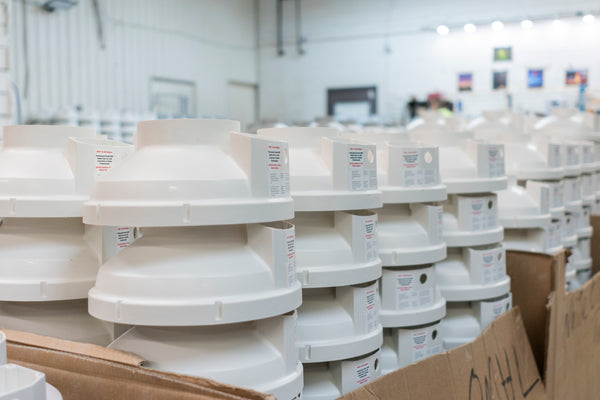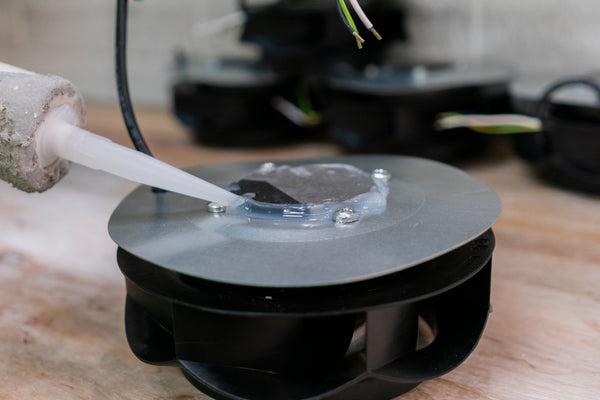
9 Things To Do Right After Purchasing a New Home
After weeks, or even months, of searching, you finally have the keys to your new place. The boxes are packed, the movers are scheduled, and you are ready for this next chapter as a homeowner!
Before unpacking suitcases and arranging furniture, there are a few important things to do right after purchasing a new home. Taking care of these tasks will set you up for a safer, more comfortable life in your new space. This guide will walk you through the essential checklist to tackle before you settle in.
1. Change the Locks
One of the first things to do is change the locks on all exterior doors. The previous owners might have given copies of the keys to their respective family members, friends, or contractors.
You should replace every lock to make sure you are the only one with access to your home. This simple action provides immediate peace of mind and boosts your home’s security from day one. You can hire a locksmith to do this for you, or if you’re handy, you can purchase new locksets from a hardware store and install them yourself!
2. Locate the Main Shutoff Valves
Imagine a pipe bursts in the middle of the night. Do you know how to stop the water flow? Locating the main water and gas shutoff valves is crucial for handling emergencies. Take a few minutes to find these valves as soon as you move in.
The main water shutoff is likely in the basement, a crawl space, or near the water heater. The gas shutoff is typically located near the gas meter outside your home. Familiarize yourself with how to turn them off. This knowledge could save you from extensive water damage and costly repairs down the road.
3. Inspect Smoke and Carbon Monoxide Detectors
Your home’s safety systems need your immediate attention. Go through your new house and test every smoke and carbon monoxide detector. If the home doesn’t have detectors, install new ones right away.
A good practice is to replace all the batteries, even if the detectors seem to be working. You have no way of knowing how old the existing batteries are. For enhanced safety, consider upgrading to newer models with features like 10-year sealed batteries or smart-home connectivity. These devices are your first line of defense against fire and carbon monoxide poisoning, so make sure they are in perfect working order.

4. Test for Radon
Radon is a colorless, odorless radioactive gas that can enter homes through the foundation. Your home inspection during the buying process might have included a radon test, but it is wise to confirm the results or perform a new test.
If the levels are high, you will need to install a radon mitigation system. If your home already has one, you should inspect its components. Check that the fan is running and that the radon fan cover box is intact and protecting the system. Regular testing and maintenance ensure the air inside your home remains safe for you and your family to breathe.
5. Look for Signs of Pests
No one wants to share their new home with unwanted critters. It is much easier to deal with a pest problem before you move all your belongings inside. Carefully inspect the basement, attic, kitchen, and bathrooms for any signs of insects or rodents. Look for droppings, nests, or gnaw marks. Check the exterior of your home for cracks or holes where pests could enter and seal them up. If you find evidence of an infestation, call a professional pest control service immediately to handle the issue.
6. Check the Plumbing System
A plumbing issue can quickly turn into a major headache. Before you move in, take the time to check the entire plumbing system. Turn on every faucet, flush every toilet, and run the showers. Look for any leaks under the sinks and around the toilets. Note if any drains are slow to empty, as this could indicate a clog. If you discover any problems, no matter how small they seem, call a licensed plumber to address them. Fixing a small leak now can prevent significant water damage later.

7. Clear the Dryer Vent
A clogged dryer vent is a serious fire hazard, yet many homeowners don’t know to check it. Lint and debris can build up over time, and you likely do not know when the previous owner last cleaned it. A clean vent also helps the dryer run more efficiently, which means your clothes will dry faster and you will save energy. You can clean the vent yourself with a special brush kit available at hardware stores, or you can hire a professional service. This simple maintenance task is essential for your home’s safety and the longevity of your appliance.
8. Deep Clean Before Moving In
Starting fresh in a clean environment makes a new house truly feel like a home. Before you bring in a single box, give your new place a deep cleaning. It’s also much easier to clean an empty home! Clean every surface, from the ceiling fans to the baseboards. Wipe down the inside of cabinets and closets, scrub the bathrooms, and deep clean the kitchen appliances. Shampoo the carpets and mop the hard floors. The goal is to remove any lingering dirt, dust, or allergens from the previous occupants.
9. Introduce Yourself to Your Neighbors
Once you have handled the immediate tasks inside your home, take some time to step outside and meet your neighbors. Building friendly relationships with the people who live around you can instantly make your new neighborhood feel like a community. A friendly introduction can lead to lasting friendships and a stronger sense of security.
Plus, your neighbors can be a great resource for local recommendations and might be willing to keep an eye on your house when you are away. A simple hello can go a long way in creating a welcoming and supportive environment in your new neighborhood.
Your New Home Journey Begins
Doing these things right after purchasing a new home will help you settle in. By taking these proactive steps, you can address potential issues early, enhance your family’s safety, and create a comfortable living space from the very beginning. Now that you have laid the groundwork, you can truly start to enjoy your next chapter in a new home and start making wonderful memories with your loved ones.





